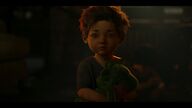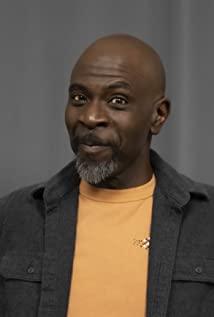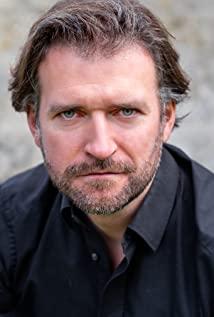"Love, Death and Robots", referred to as "Love Death", has been very popular recently.
The 300-minute collection of animated shorts has been well-received since its launch on streaming platform Netflix on March 15. The 18 animated short films included in it have different styles and contents, and it is difficult to generalize the reason. Therefore, if you feel it carefully, the title "Love, Death and Robots" sounds quite interesting, but there seems to be a hint of helplessness in it - all science fiction movies/series can probably have such a (sub) title , and these three words are basically the triple motif of science fiction movies. It's like a military coat, it's equally warm when you wear it, as for whether it's close to the body, it's impossible to talk about.
The ambiguity of the title seems to imply to the audience that "Love Dead" is not a work that can be summed up in one sentence at all, and it is full of various unspeakable and even irreconcilable contradictions. In fact it does. Although it is more appropriate to evaluate "Love Dead" as a whole from a production point of view, after all, when Netflix launched these 18 short films together, it was considering that there are certain similarities between them. However, it must be unbiased to comment on it as a work from the creative level, because whenever we talk about a work in general, we must ignore some of the unconventional personality characteristics, and these personality characteristics precisely determine the " "Love Dead" is not "a" simple assembly line work - you must know that these 18 short films not only have different styles and standards, but also have great differences in the values in the core.
Faced with such a complex short film complex, the author believes that at least three dimensions can be considered: the stylized degree of visual effects, the radical degree of text, and the degree of sensory stimulation. The first two are usually used to evaluate an animation work. Hard indicators, the third is a common feature of streaming dramas, and it is also a major selling point of current streaming dramas. Although the indicators of each item will show a certain degree of subjectivity in the evaluation process, after subdividing the indicators, it will be found that the "quality" of the 18 short films is indeed difficult to generalize:
It can be seen from this table that the 18 works of "Love Dead" not only have uneven levels under the horizontal comparison, but even the internal indicators of each work have their own advantages and disadvantages. Generally speaking, the biggest problems presented by these works are mainly that the visual stylization is not obvious enough, and the technical innovation ability is insufficient. There are not many works that can really shock people and make people feel refreshing. Only a few works are more prominent. Among them, Episode 3 ( The Witness ), Episode 8 ( Good Hunting ), and Episode 14 ( Zima Blue ) are the highest. It is worth noting that the various visual techniques used in episode 3 have also been applied in this year's best animated feature film "Spider-Man: Parallel Universe" at the Oscars. The whole work is very dynamic and the camera movement is extremely bold. The depiction of movement even surpasses all the live-action CG works in "Love Dead".
Among the three indicators, the highest overall level is the degree of sensory stimulation. Indeed, every episode is very exciting, very pornographic and violent, making people addicted, and this dimension is so indescribable... So, you have to watch it yourself to know, and I won't go into details here.
From a textual point of view, "Love Dead" is generally quite satisfactory, with both radical and conservative works coexisting. It is worth discussing that although some works have made innovative attempts of "science fiction +" in terms of genre, they are very conservative (even conservative to reactionary) in terms of value expression. For example, the 4th episode ( Suits ) with the most western style carried out the fusion of technology + western style, but in essence, it unconsciously showed a colonizer's treatment of the aborigines (hordes of people without any character attributes). , "dehumanized" monsters) aggression and slaughter. One more sentence here, as early as 1965, the American intellectual Susan Sontag mentioned in her article "Imagination of Disaster" that a major theme of science fiction movies is the dehumanized imagination, and this A theme is always full of an inherent contradiction that is difficult to self-consist: on the one hand, dehumanization is terrifying (not to mention a large group of dehumanized things); on the other hand, dehumanized invaders are disguised as - such as collaborative work, the obvious simplification of morality - and then became a veritable savior.
Sontag's observations tell us that this work in "Love Dead" is nothing more than a simple deformation of the traditional American sci-fi film, and its contained colonial hero narrative is hard not to be reminiscent of Europe The colonization of the American continent and the actions of the Indians. If in the era of "Flying Over Mount Guan" (1939), similar works could still be called masterpieces because of their high aesthetic value, now it is difficult to get rid of the fate of the oppressed groups complaining.
In addition to the contradictions within the text, there are also differences between the texts of the various works in "Love Dead". For example, we can see a work that forms a near-mirror relationship with Episode 4 - aka Episode 8. In this episode, the mythology of the colony is gradually dispelled by technology, which in turn creates another steampunk cyborg myth with its own enormous and mysterious energy. The protagonist "Fox Spirit" first got rid of the shackles of female identity in classical literature, and then put on a coat of steel and became a female warrior against the British colonists. This signification attempts to get rid of both the collective and the masculinity (or masculinity), which not only forms a kind of antithesis to Western science fiction, but also completes the kind of Sontag's depiction of the kind of America that was flooded in the 1960s and 1960s. The paradox of science fiction.
Similar inconsistencies arose in episodes 10 ( Shape-Shifters ) and 13 ( Lucky 13 ): the latter enshrines the military pilot as an invincible god of valour, while the former questions the image of the American military (which The original author of the two episodes is still the same person...), and through the self-imposed exile of the "dog man" has a more in-depth racial and ontological discussion. It is precisely because of this contradiction that we have been able to confirm the point of view that "Love Dead" is indeed a complex entity that cannot be simply described, let alone a binary judgment of "good" or "bad". Diversity of styles and cultural inclusiveness are beyond the reach of an animated feature film.
The excitement brought by "Love Dead" reminded the author of the feeling when I watched the two " Genius Party & Genius Party Beyond , 2007-2008" produced by Japanese animation production company STUDIO4℃. Putting the works together is a bit of a donkey's mouth not a horse's mouth. However, it is precisely by virtue of their huge differences that we can probably capture the commercial nature of "Love Dead": in terms of the number of works, the two "Carnival of Geniuses" add up to 14, while Netflix's "Love Dead" ” launched 18 copies in one go, and the financial resources are not the same. In terms of style, most of the works in "Carnival of Genius" belong to artistic animation and experimental animation, and the director's personal attributes are almost completely preserved, which is full of unrestrained imagination and considerable stream of consciousness; "Love Dead" The vast majority of the short films are closer to the category of commercial animation (after all, this is an animation collection for hundreds of millions of subscribers). In addition, the purpose of the former is to cultivate or promote new creators (mostly the first or second works of the creators), while the latter is obviously to make money - each work is produced by very mature European and American animation. Studios produce -- or "please" subscribers, and that's been a major source of negative reviews for Love Dead.
In an article on the WeChat public account "Iris", the author pointed out the difference between Netflix's "special customization of content according to big data push algorithms" and its words "giving creators more autonomy than big studios" There is a contradiction between the two; another article further stated that Netflix "publicly stated as early as 2016 that the site conducts A/B tests on users", "formed a set of combination punches that deeply investigate audience preferences, punch to the flesh, accurate strike". These articles imply that Netflix products, including "Love Dead," are ultimately products of big data, products customized according to user needs, but they don't seem to point out to what extent big data is involved in Netflix's investment. the production process of the movie/series. In other words, is it possible and not contradictory between "autonomy" and "special customization"? Can Netflix give creators more freedom in a certain genre that is popular with audiences, allowing people to see a visual and narrative style that is different from the mainstream animation studios?
I think it is possible, and to a certain extent, "Love Dead" also truly embodies such a fierce game: on the one hand, from the list of diversity creations, the ideas of these short films are not out of thin air, and most of them have literature. The original works can be followed; some authors of the original works are quite famous sci-fi authors or professionals in the sci-fi field, such as British sci-fi writer Peter F. Hamilton, American sci-fi writer John Scalch, Chinese-American sci-fi writer Liu Yukun, etc. There is no shortage of works that show strong personal preferences. On the other hand, all of these originals have been systematically adapted by almost the same screenwriter Philip Garrett, and all have gone through the hands of executive producers Tom Miller and David Fincher. After all, "Love Dead" has a bit of integrity at all (at least the elements of the yellow storm run through from beginning to end). From this point of view, the perfunctory title of "Love, Death and Robot" is not a compromise that cannot be summarized at all, and the form of short film collection itself is also the result of seeking a balance between art and business. Don't go all out in search of individuality, and don't let a profit-seeking mentality completely blind you.
Of course, whether it is traditional "user testing" or "big data analysis" that seems to be revolutionary but is actually just an upgraded version of "user testing", it clearly shows that American commercial movies and dramas have been around since the very beginning. The applied base color. Capital and audience preference are the lifeblood of all these works, including "Love Dead". It can even be said that "pleasure" is the characteristic of mainstream American film and television works. Not only do we have no need to criticize this, but we must realize that historically , it has always been the audience, the employers, rather than the creators themselves, who can really decide the rise and fall of a certain type of work. It should be admitted that "Love Dead" can't be called "a" perfect work on any level, but Netflix undoubtedly handed in a surprising answer: it was cast in the hearts of the audience 18 seeds with infinite possibilities, and 18 bullets to the American animation field - the truly revolutionary part of Netflix is still the change and impact on the traditional production and distribution model.
View more about Love, Death & Robots reviews











